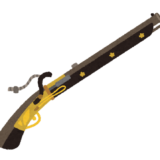 なおえもん
なおえもん
Hi there.I’m Naoemon.
Tokugawa Ieyasu, who succeeded Toyotomi Hideyoshi, was initially tolerant of Christian proselytizing.
When Tokugawa Ieyasu became a barbarian general, he made peace with the Jesuits and Christian forces.
It was Tokugawa Ieyasu’s policy to once and for all restore the diplomatic relations that had been broken by Toyotomi Hideyoshi.
However, after a certain point, the Tokugawa Shogunate decided to ban Christianity altogether.
Moreover, it did not allow even voluntary faith, as in the case of Toyotomi Hideyoshi’s decree banning the Bateleans.
The Tokugawa Shogunate completely banned Christianity.
もくじ
Why did Tokugawa Ieyasu ban Christianity?
Tokugawa Ieyasu’s ban on Christianity was triggered by the troubles with Portugal in 1609.A Japanese red seal ship got into trouble with a Portuguese ship, the Madre de Deus, in Macau, killing 60 of its crew.
In retaliation, the Japanese sunk the Deus, which was in port in Nagasaki.
As a result of this incident, in 1612, Tokugawa Ieyasu issued a ban on Christianity in the territories directly under the control of the shogunate.
However, this incident was merely a trigger, and Tokugawa Ieyasu was looking for an opportunity to ban Christianity.
During the Warring States period, Christianity was more prevalent in Japan than we realize.
As of 1614, when the expulsion of the Christian feudal lords began, it is estimated that there were at least 200,000 Japanese believers, and in some cases as many as 500,000.
At the time, Japan’s population was around 12 million, which means that 2 to 4% of the population were Christians.
There were about 100 to 200 Portuguese and Spanish missionaries and church officials in Japan, and 200 churches.
For a time, Nagasaki and other areas were like a territory of the Jesuits.
The spread of Christianity in Japan was, in fact, related to a great interest.
Trade with Portugal and Spain brought great profits to the people of Japan and the warlords of the Sengoku period. However, it was always accompanied by the preaching of Christianity.
From the 15th century to the 16th century, Portugal and Spain developed shipping routes to various parts of the world and carried out extensive trade, but this trade was accompanied by the propagation of Christianity.
Impact of Christian Expansion on Japan
The Pope granted Portugal and Spain permission to divide the world into two parts in exchange for the propagation of Christianity. Under this arrangement, both countries were obligated to send missionaries and build churches throughout the world in exchange for having colonies all over the world. The Portuguese and Spanish trading ships also carried missionaries, and they always asked for permission to proselytize in the new lands they were to establish trade with. They began trading only with those lands that gave them permission. When they came to Japan, they also asked for permission to proselytize Christianity as a condition for doing business. The feudal lords allowed Christian missionaries to trade with the Nanban vessels. As a result, Christianity exploded in Japan during the Warring States period. At that time, the Nanban trade was not just about bringing rare Western cultural relics. Most of the Nanban ships coming to Japan brought goods that had been loaded in Macau or Chinese ports. Although guns were already being manufactured in Japan, lead used for bullets and nitre, the raw material for ammunition, could not be produced in Japan at that time, and had to be imported from overseas. Japan could not have obtained ammunition for guns or raw materials for gunpowder without the Nanban trade. In other words, the prosperity of the Nanban trade and the spread of Christianity were evidence of the importance of imports of military supplies by the feudal lords. Since Ieyasu Tokugawa became the ruler of Japan, he has tried to reduce the military power of the feudal lords. In principle, the construction of castles and renovations of castles were prohibited, and the shogunate permitted them only when there was a special reason to do so. In 1609, the construction of large ships with a load of 500 koku or more was prohibited, and large ships owned by the clans were confiscated. Thus, while the Tokugawa Shogunate was trying to reduce the military power of the various domains, the Southern barbarian trade with Portugal and Spain by the various feudal lords was very harmful. Moreover, Portugal and Spain were militarily unsettled. Nagasaki had become like a Jesuit territory. Christians also frequently destroyed temples and shrines throughout Japan. Spain even considered an armed invasion of Japan. However, Japan was then in the Warring States period, and the daimyo (feudal lords) were well equipped for such an invasion, so they simply decided against it. If Japan had not been in the Warring States period, it could have been invaded by Portugal or Spain, as was the case in other Southeast Asian countries. Taking all these factors into consideration, Tokugawa Ieyasu decided to ban Christianity altogether.Why did Tokugawa Ieyasu favor the Netherlands and permit trade?
Besides the dangers of Christianity, Tokugawa Ieyasu had another major reason for banning it altogether. This was so that the Tokugawa shogunate could trade exclusively with the Netherlands. Tokugawa Ieyasu had a strange connection with the Netherlands. In April 1600, before Tokugawa Ieyasu became a barbarian shogun, a Dutch ship, the Liefde, drifted ashore in Usuki, Oita. Ota Ikichi, the feudal lord of the Usuki domain, protected the crew and reported the incident to the Nagasaki magistrate. The Liefde was sent to Osaka. This took place shortly before the Battle of Sekigahara, when the Toyotomi administration was still in power. During this period, Ishida Mitsunari, who had been the chief watchdog of the Toyotomi administration, had lost his post and returned to his domain, and Tokugawa Ieyasu was effectively in charge of political affairs. Tokugawa Ieyasu was therefore assigned to inspect and interrogate the Liefde. Spanish Jesuit missionaries in Japan heard about the Liefde and urged Tokugawa Ieyasu to execute him. The Jesuits were a Catholic Christian order, which at the time was in violent conflict with Protestant Christianity. The Netherlands, the mother country of the Liefde, is a Protestant country. So, as a Jesuit living in Japan, he was very much afraid that Protestant power would reach Japan. Tokugawa Ieyasu, however, did not heed the Jesuit missionaries’ anointing, but instead circulated the Liefde to Uraga and invited its crew to Edo (present-day Tokyo). Tokugawa Ieyasu obtained overseas information and other information from the crew of the Liefde and recruited some of them as his vassals. Jan Joosten, a Dutchman who became a key figure in the Tokugawa shogunate, and William Adams, an Englishman known in Japan as Anjin Miura, were crew members of the Liefde. From Jan Joosten and William Adams, Tokugawa Ieyasu learned in detail about the national and religious conditions in the West at that time. At that time, Protestantism, which emerged from Luther’s Reformation, was rapidly expanding its influence in the Christian world. Protestantism is a sect that criticizes the authoritarianism and money power of the church, as symbolized by the indulgences, and seeks to return to a pure faith. Therefore, the old church, Catholicism, and the emerging sect, Protestantism, were in violent conflict. Portugal and Spain were Catholic countries. The conflict between Catholics and Protestants influenced their great voyages of discovery and invasions around the world. The Catholics, who were being pushed by the Protestants, aggressively embarked on world missionary activities in order to gain as many followers as possible. The Portuguese and Spanish missionaries who came to Japan during the Warring States period all followed this trend.Why Tokugawa Ieyasu never stopped trading with the Netherlands
The Netherlands, on the other hand, was a Protestant nation. The Netherlands was also an emerging maritime power, following Portugal and Spain in expanding, trading, and invading throughout the world. The Dutch also proselytized Christianity, but this was not their main objective. The Dutch did not strongly request Christian missionary work from Japan either, but only trade. In other words, the Dutch did not need to proselytize Christianity to trade with Japan. Tokugawa Ieyasu knew this situation and decided to trade only with the Netherlands. Moreover, if the Tokugawa Shogunate traded exclusively with the Netherlands, only the Shogunate could enjoy the benefits of trade. The Netherlands therefore became Japan’s only window to Western civilization during the Edo period. Dutch studies, the study of the civilization brought from the Netherlands, became the most advanced study in Japan.0



コメントを残す